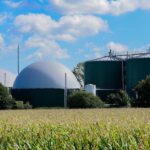Soil conservation is crucial for sustainable agriculture and environmental health. In South Africa, where diverse climates and soil types present unique challenges, implementing effective soil conservation techniques can enhance productivity and protect natural resources. Here are ten ways to implement soil conservation techniques in South Africa:
- Contour Plowing
Contour plowing involves tilling the soil along the contour lines of a slope. This technique helps reduce soil erosion by slowing down water runoff and promoting water absorption, which is particularly beneficial in South Africa’s hilly and uneven terrain. - Terracing
Terracing transforms steep slopes into a series of stepped platforms. This method reduces soil erosion and surface runoff by creating flat areas that slow water flow and enhance water infiltration. Terraces are especially useful in areas with significant elevation changes. - Cover Cropping
Planting cover crops such as legumes or grasses during the off-season helps protect the soil from erosion and improves soil fertility. Cover crops add organic matter to the soil, enhance its structure, and reduce nutrient runoff, making them a valuable practice for maintaining soil health. - Reduced Tillage
Reduced tillage or no-till farming minimizes soil disturbance, which helps preserve soil structure, organic matter, and moisture. This method also reduces erosion and improves soil health, which is beneficial in South Africa’s varied agricultural zones. - Agroforestry
Integrating trees and shrubs into agricultural landscapes, known as agroforestry, helps reduce soil erosion and improve soil fertility. Trees provide windbreaks, enhance water infiltration, and contribute organic matter, making this practice well-suited for diverse South African environments. - Gully Plugging
Gully plugging involves creating barriers or structures in eroded gullies to slow down and capture sediment. This technique helps prevent further erosion and stabilizes the landscape. It is particularly useful in areas prone to severe water erosion. - Grass Waterways
Grass waterways are strips of grass planted in natural water channels. These areas help manage water runoff, reduce soil erosion, and improve water quality by filtering sediment and nutrients. They are effective in regions with high rainfall and runoff. - Rainwater Harvesting
Collecting and storing rainwater for irrigation and other uses reduces the pressure on soil resources. Techniques such as building rainwater harvesting pits or cisterns can help manage water resources efficiently, especially in South Africa’s arid and semi-arid regions. - Proper Grazing Management
Implementing rotational grazing and managing livestock density helps prevent overgrazing and soil compaction. By allowing pasture recovery periods and controlling grazing patterns, soil health can be maintained and improved. - Organic Matter Addition
Incorporating organic matter such as compost or manure into the soil improves its structure, moisture retention, and fertility. Organic matter also enhances soil microbial activity and reduces erosion. This practice is beneficial for enhancing soil health and productivity in various South African soils.
By adopting these soil conservation techniques, South Africa can address soil erosion, enhance soil fertility, and promote sustainable agricultural practices. Implementing these methods requires collaboration among farmers, researchers, and policymakers to ensure the long-term health of South Africa’s soil resources and agricultural productivity.
Join 'Farmers Mag' WhatsApp Channel
Get the latest Farming news and tips delivered straight to your WhatsApp
CLICK HERE TO JOIN






